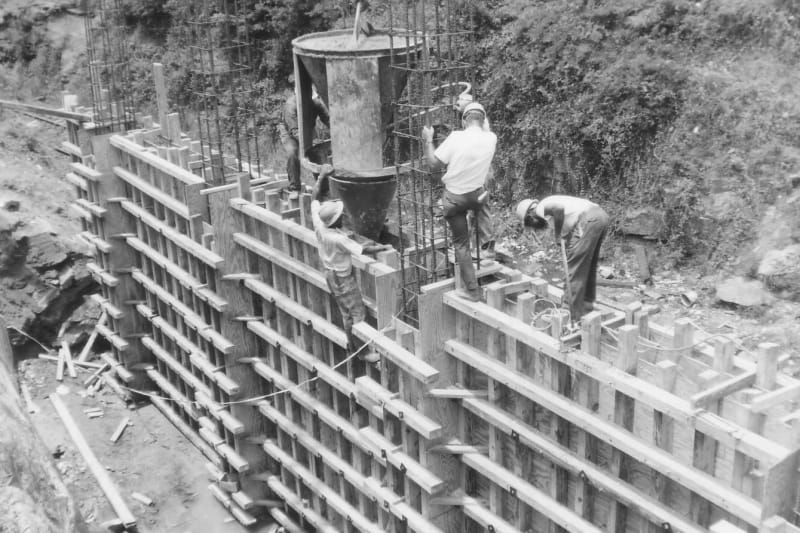TME - To a Contractor, the wall contains 117 yd
3 of concrete, for pay purposes. For a moment, disregard the schedule, which the
OP implies is important. Financially, 117 yd
3 is a reasonable size pour considering the work involved. If the pour is divided into sections... how many?
Half (each 75' long) does not help.
Half, say 6 sections at 25' each, with odd number (1,3 & 5) being placed one day and even numbers (2, 4 & 6) placed another day makes appears to make some sense... however, formwork becomes a pathwork quilt and there are complications with rebar extending through the ends of each form (14' of hydrostatic concrete pressure, since each 25' long section will be placed fairly quickly). All this takes extra time (labor cost) with no increase in pay quantity.
Contractor would have to evaluate weather, other job conditions, schedule, workforce, available equipment, concrete supply dependability, etc. to make an informed decision. If one placement crew cannot handle the work, probably best to add a second placement crew for the single pour. A qualified Contractor would have picked this up and incorporated conservative means and methods pricing into the bid price - the Engineer and Owner would never know it.
Here is a photo of an overpass railroad crash wall under construction on one of our project that gives an idea of (wooden) formwork needed for 14' hydrostatic pressure. Note the worker on the right, he is about to lower a concrete vibrator into the forms on a rope... just another detail means and methods that is not obvious, there are others.
![[idea] [idea] [idea]](/data/assets/smilies/idea.gif)

![[idea] [idea] [idea]](/data/assets/smilies/idea.gif)
![[lol] [lol] [lol]](/data/assets/smilies/lol.gif)
